Genre: Action
Publisher: Microsoft
Developer: Epic Games
Release Date: November 7, 2006
Destroying Beautifully …
When I saw early screenshots of Gears of War, the imagery resonated with me to the point where I had decided that I needed to buy an Xbox 360 when it launched. After slogging through a year of mediocrity, ports and a few shimmering glimpses, GoW finally made it into my grubby little mitts. So the questions remain: Was it worth the wait? Does GoW live up to the hype? To a great many reviewers and gamers out there, the questions can be answered with a resounding yes. To me, I see more nuances in the pixel shaders and motion blur that is the sum of this game's parts.
GoW deserves special consideration and scrutiny because Microsoft's reps, as well as EB Games and Gamestop, have been pushing this as the game to get; such heavily marketed games invariably do better than those that merely garner critical acclaim. It is a fact that games that sell well are not always designed and executed well, and on the flip side of the coin, games that are designed and executed well but lack a good marketing hook oftentimes meet with critical acclaim but barely make back their development costs. With the amount of money, energy, face time and a lack in franchise pedigree (Epic's Unreal franchise excelled on the PC and was dismal on consoles, and GoW runs the Unreal 3 engine), one would be led to believe that GoW could be just another pretty face with a lot of make-up.
Let's take a look and decide for ourselves.
GoW is a brand-new intellectual property, which is difficult to come by in gaming, so it already scores points in that area alone. The first aspect to tackle is the game's single-player campaign, which is also playable cooperatively on the fly. This is one of the only games I know of that you can play co-op seamlessly in a way where you can jump into another person's game via Xbox Live on the fly, drop out, be replaced by NPC AI, and then replaced by another player. This is a great ability, as you can play the game split-screen or through Live and work the campaign at your own pace with a friend or without and not be locked into one means or another.
GoW, unlike most science fiction opuses, boasts a fully scripted and developed storyline that has seen a massive amount of time and effort in order to create a strong single-player experience and narrative. The story is based on a fictional world not unlike our own, but at the same time very different. The planet Sera (which means "night time" in Italian) is replete with references to our own world and political climate. This is a good thing; it shows a maturity of expectations of the audience who is going to play this game. The world of Sera has been developed into a fully realized and fully functioning world with a background story that plays into pivotal aspects of the game's narrative. In the world of Sera, mankind has been openly fighting each other over a petroleum-based fuel source until a new alternative and renewable fuel source was discovered and creates a veritable monopoly on energy in Sera for a few lucky states. War creeps into a lull for a while but then breaks out again as a new political power emerges on Sera, the Coalition of Organized Governments, or simply COG. COG is a fringe element which soon gains massive popular support around the planet, when in the midst of the Pendulum Wars, a new enemy reveals itself – the Locust.
As the story goes, the war with the Locusts rages for four years with all of humanity pressed into a very small pocket which is tenuously controlled by COG, but not until after a very horrible decision was made. This is not talked about directly in the game, but you can see its affects everywhere. GoW is a battle-scarred landscape, but that damage isn't just from four years of constant warfare; before COG retreated into its safe haven, they unleashed every orbital weapons platform they controlled on every major population center, which not only beat back the Locust but also imposed global genocide on everyone who was not down with COG. You'll feel the effects of this decision throughout the game as you encounter the Stranded, the unlucky ones who were left to rot after COG scorched the earth.
So where do you fit into this Homeric opera? You play the role of Marcus Fenix, whose name is meant to sound like phoenix in a not-so-subtle way. In fact, if you look at early marketing images of Marcus, you'll notice that he's framed by flaming wings ghosted with images of the game. Marcus begins the game in prison and has been locked up for four years of a 40-year sentence. Unless you read the manual or the CE art book "Destroyed Beauty," you'd miss out on the fact that Marcus is a decorated soldier who disobeyed orders to try and save his father, a renowned scientist, when the Locust popped up during Emergence Day.
Further storyline elements would only serve as spoilers, but it'd be more important to look at the characters of this story. GoW is clearly using science fiction greats as influences, and the most apparent to me is the film "Aliens." The COG troopers you play alongside are supposed to be ordinary everyman types who are thrust into an extraordinary situation, but unfortunately, we're largely left with stereotypical characters with some momentary flares of life.
The most glaring typecast of all is Marcus. He is every badass soldier who disdains authority and does things his way from every mediocre sci-fi movie or game ever made. There is simply nothing about Marcus that makes him special or sets him apart from any other hero. He is not especially an anti-hero either, as he possesses prowess and the will to do the right thing, but he lacks the edge that the designers obviously wanted him to have. He is gruff and grumpy and curses and such, but so what? Ultimately, Marcus is a two-dimensional cut-out, which does not cripple the game. Indeed, the average gamer won't really care, but Marcus is disappointing as a protagonist.
The supporting cast is not much better. Dominic Santiago, your best friend and sidekick, is perhaps the exception. Dom shows some instances of and hints of humanity which makes him easier to relate to. He is the only one who shows regret or remorse and humility, which is not to be confused with weakness, and he actually has a good sense of humor. Cole, on the other hand, is such a big walking stereotype that it's borderline offensive. What else does a team of soldiers need other than a big black guy who says, "Yo," carries a very big gun, and is a former "thrashball" player? Finally, Baird is a source of sarcastic one-liners who banters back and forth with the others and curses a lot – again, someone we've seen better versions of elsewhere. With all of the effort and time spent on developing GoW's storyline and expansive world, it is disappointing to see that the characters simply do not deserve to live there.
So if these characters are lame, then how do they look? The immediate reaction of anyone who lays eyes on GoW will undoubtedly be that of awe and wonder. Quite frankly, GoW makes such successful use of the Unreal 3 engine that it is the best-looking game I have seen to date, and that includes my beloved PC. The normal mapping used on textures really works in bringing out the texture's grittiness, and despite early fears, the palette does not consist of varying shades of gray and brown. Throughout the entire experience, the models and architecture are amazing to behold. Epic didn't create levels; they created vistas, and for the firs time, 360 owners can see what their little white box is really capable of doing. Dynamic and HDR lighting create a great sense of depth and height. Motion blur is used tastefully and effectively to create a needed sensation of speed at crucial times. When using the "roadie-run," the use of motion blur and handheld camera effect really create a sense of tension; while such a cool could be lessened by being overused, Epic keeps a lid on it so the effect remains evocative.
Early areas are modeled along a reasonably realistic architectural form while still creating a compelling game area in which to work. Debris and detritus mark the landscape in a purposeful fashion so as to not only look good but also be useful as cover; none of the models are lacking in their textures and animation. Later on, the game evolves into areas that are readily distinguishable, and each has its own vibe and creates an aura which lends itself to the overall intensity. The only problem is that a lot of these aesthetic touches and nuances aren't often appreciated because there simply isn't time to take a look around.
As the game progresses, Epic does an excellent job of using lighting and scale to create environments which stand apart from one another even though the color palette does not touch every angle of the color wheel. It's a dark and muddy-looking game, but mud, rust, grime, and dust never looked so good before. GoW uses metal, wood, rock and concrete in all of its level design, along with warm and cool lighting, demonstrating that the Unreal 3 engine isn't just the real deal; it may just be the only deal as far as 360 is concerned. As much as GoW is a game, it is also a raw and unadulterated display of the Unreal engine in action. The game seldom runs slower than 30 frames per second, and it handles just about every visual bell and whistle with the élan of a practiced veteran piece of software.
If the game looks amazing, how does it play?
GoW's gameplay mechanics are solid, but not perfect. Epic makes extensive use of context-sensitive button presses for its cover system, which is an integral part of its gameplay, and for the most part, it works. It's based around the concept that you are going to move from cover to cover, only exposing yourself to gunfire in order to move and shoot. The result is a very hectic and intense game being played in a very directed and methodical manner. There is no reticle on the screen, and the minimalist HUD is a nice touch.
If you aim, it slows your movement and agility, but if you don't aim and shoot from the hip or blind-fire, you are left to using strike marks and tracer rounds to adjust your fire. Blind-fire is a crucial tactic that will save your life numerous times, even though it costs more rounds. GoW handles aiming very well in this way. It makes the game challenging to play, especially in multiplayer matches, without injecting a false sense of difficulty. Shooting from the hip is appropriately imprecise, while using the left trigger to aim is purposefully slow without being ponderous. The aiming system lends an air of authenticity and realism to an otherwise fantastical game.
The cover system, on the other hand, can range from working perfectly and seamlessly to being awkward and clunky. The problem is that the cover system revolves around one button and the left thumbstick. Standing near cover and pressing A will make your trooper take cover behind that object, but pressing A without any cover nearby will result in your trooper diving in a direction you order, or else he will dive forward by default. From cover, you can execute a series of maneuvers which serve different but useful purposes. You can move from one piece of cover to another using the SWAT turn, which is great. You don't have to leave cover, move and then enter cover again to safely move from one pillar to the next, as you might in Ghost Recon: Advanced Warfighter.
For the most part, the cover system and the use of stop-and-pop gameplay is very compelling. Finding cover and using angles makes the game very tense, tactical, and ultimately very fun to play. The focus isn't on circle strafing; it's on flanking. The only problem is that enemy AI doesn't exactly match the game's tactical nature. Locust soldiers are not as adept at maneuvering as they could be. When they move, it is generally in a straight line and directly at you, and they oftentimes take cover in ways that don't offer you any protection. Playing single-player on the Casual level makes the game almost too easy because the hit points for each Locust soldier type is about two-thirds of the Locust troops on Hardcore and nearly half of the hit points on Insane. The Locust don't necessarily change their tactics on more difficult levels, either.
Because the game's NPC AI isn't too bright, some of GoW's niggling control issues do not reveal themselves. Using a single button to control context-sensitive maneuvers gets troublesome when you're moving through tight sections and are being engaged. Usually, the cover is arranged in a way so that it runs across your axis of advance, so you usually find yourself taking cover appropriately. Sometimes, you'll find yourself taking cover against an object you didn't mean to, or if for some reason a Locust does get behind you, un-sticking from cover, turning and firing gets to be an awkward affair, especially if you're trying to jump out of the way. Too many times I'd find myself in the wrong spot because the context-sensitive button incorrectly assumed what I was trying to do.
While streamlining gameplay is a welcome evolution in design, sometimes it can be streamlined too much. Jumping and dodging could be mapped to another button, or perhaps a double-tap. Oddly enough, in order to mantle an object, you have to take cover into it first, which is disrupting. Mantling or hopping cover shouldn't take a button press to take cover, and then another button press to mantle. It would seem to me that taking cover could be mapped to one button and dodge-jumping could be mapped to another button, so that a more precise method of maneuvering could be achieved.
The most annoying aspect of the gameplay mechanics, though, occurs when you have to heal a teammate. When one of your teammates falls, you can revive him, but to do so you have to leave cover, which feels very much like an oversight in the design. There is no logical reason as to why you need to leave cover to heal a teammate. For a game which bases its style around being tactical, this is one maneuver which smacks of being sophomoric in the midst of a firefight. What ends up happening is you leave your buddies bleeding because at each checkpoint, your teammates will respawn anyway, so healing them serves no point, other than get you killed. Experiencing this makes one wonder how Epic could get everything else so right, even if the context cover system is a little wonky, and yet get this so wrong. At the end of the day, the context-sensitive nature of GoW's gameplay gets the job done, albeit with some annoying quirks.
Epic has gone on the record as saying that GoW is primarily a single-player game, but even so, its multiplayer experience is quite fun. There are a few available game modes, but Warzone will be the most popular. Execution and Assassination round out the other game modes, but the same gameplay mechanics are present throughout. What GoW lacks in game mode options, it makes up in an overall good time. The match-making process leaves a lot to be desired, as you can only put together random players in ranked games, not organized teams. Epic should have given players the option to set up organized matches to promote team play and clan development.
Even so, the stop-and-pop mechanics work well in multiplayer sessions. A good team working together and covering each other will be treated to almost a chess match, where players gain position and advantage over each other. Woe be to the guy who thinks running as fast as he can to other side of the map will get him kills, unless getting himself killed counts. To run and gun on one's own terms is a sure way to get yourself done in early in a match and kicked off your host's server. Multiplayer maps also make good use of the various environments displayed, providing some good spots for bottlenecks and fire-maneuvers. I would have liked to see some maps that were not so horizontal, but the selection satisfies, and learning the maps will take long enough for players to develop themselves into cunning opponents that will make tempting marks on the leaderboard. At my last count, it listed 76,108 players, which isn't bad for a game that's been out for a week.
Oddly enough, for a "Halo Killer," GoW isn't a multiplayer opus. The game revolves solidly around its single-player experience, which is a refreshing change of pace, especially when coming out of a design house like Epic, which is known for its multiplayer mayhem. While the single-player experience is solid enough, it only gets better as a pseudo multiplayer mode. You can run a single-player campaign in co-op over Live, and a friend can jump in and out of the story mode any time you want, which is a great feature. The game offers some branching paths for co-op sessions to drift away into single-player experiences again, but most of the time, players will spend their efforts covering each other as they maneuver and fire. This is where the Hardcore and Insane difficulty levels are truly fun. Playing at the higher difficulty levels can often be an exercise in frustration, but playing them with a friend makes them a worthwhile challenge, and having a ton of achievements to unlock in co-op mode makes it compelling to replay the single-player game.
GoW will be labeled the 360's first true "killer app" – the game that everyone who owns a 360 ought to have on their shelves, even if they don't like shooters. GoW is not perfect. The single-player game, while stunning to look at and fun to play, is marred by lackluster characters that came straight out of central casting. The nuances and political references are wasted on these deadbeat stock sci-fi archetypes, which is disappointing. Likewise, the cover system works very well but stumbles in congested spots, when being tactically sharp means the difference between victory and reloading the last checkpoint. Even so, GoW is the best-looking game on the 360, if not on all systems, including shooters on PC.
 What it all boils down to is this: Gears of War is fun to play and will monopolize your time for a good long while. It is one of the few games to arrive on the 360 that just about every gamer can agree is worth the price of admission. If GoW can get this many things right, then hopes are high for the eventual sequel, assuming Epic continues to handle it and doesn't foist it off another design house that doesn't share the same vision. Call of Duty suffered this ignominious fate, and it would be tragic if GoW fell the same way.
What it all boils down to is this: Gears of War is fun to play and will monopolize your time for a good long while. It is one of the few games to arrive on the 360 that just about every gamer can agree is worth the price of admission. If GoW can get this many things right, then hopes are high for the eventual sequel, assuming Epic continues to handle it and doesn't foist it off another design house that doesn't share the same vision. Call of Duty suffered this ignominious fate, and it would be tragic if GoW fell the same way.
GoW was the reason why I bought an Xbox 360 when I first laid eyes on it. Am I happy with what I got the day GoW dropped? For the most part, yes. Is there room to grow? Absolutely. Whether it is chainsawing or curb-stomping kids online, GoW is a fun game in all respects. I just wish Epic distributed their efforts more evenly because that would have pushed GoW that extra little bit to make it an all-time favorite.
Score: 9.1/10
More articles about Gears of War



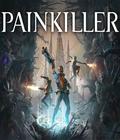
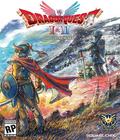
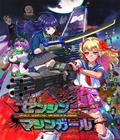



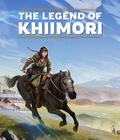

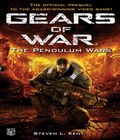 Gears of War blends the best of tactical action games with the best of survival horror titles, thrusting gamers into the harrowing story of humankind's battle for survival against the Locust Horde.
Gears of War blends the best of tactical action games with the best of survival horror titles, thrusting gamers into the harrowing story of humankind's battle for survival against the Locust Horde.
















































